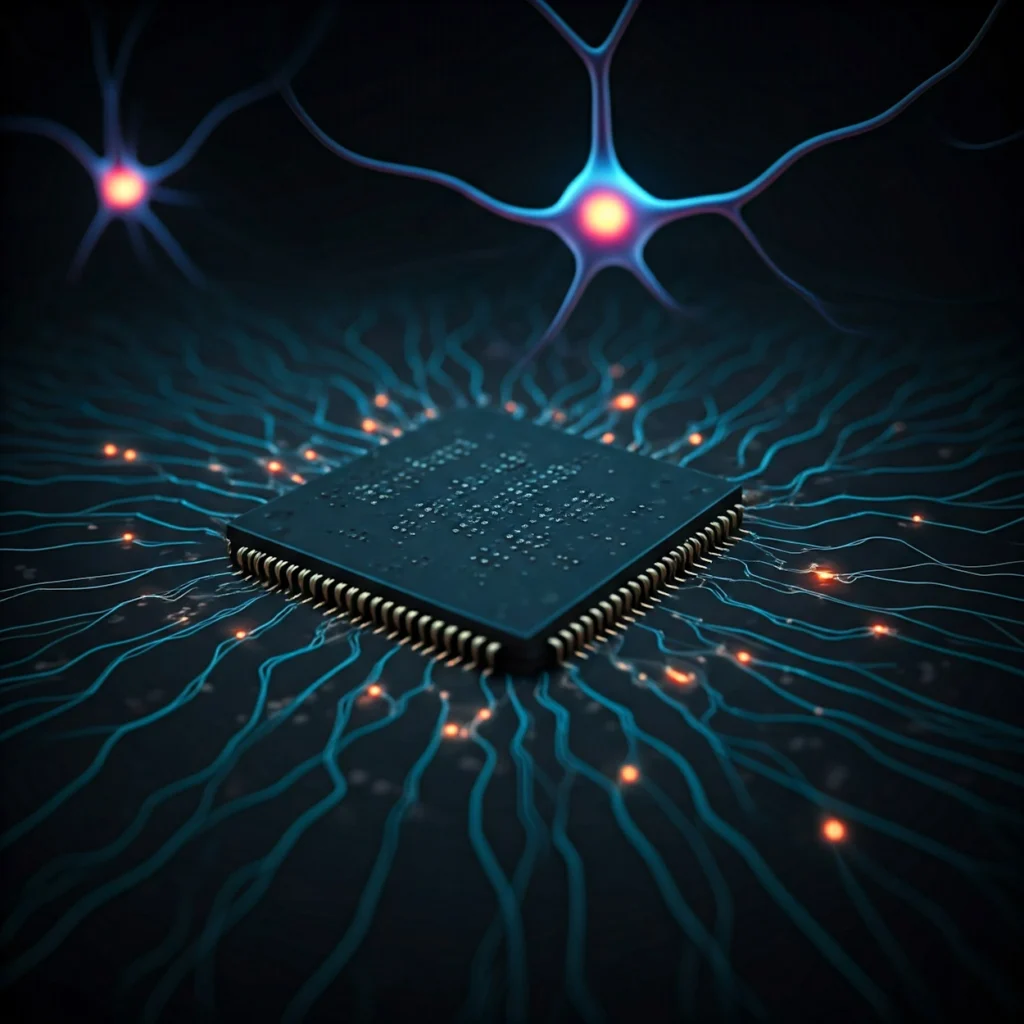This paper delves into the innovative convergence of AI agents and neuromorphic computing to replicate the structure and function of biological neurons. It examines the advancements in meta-learning, transfer learning, and ethical frameworks, emphasising the potential of distributed neural networks and global clusters. The paper provides a thorough analysis of challenges, solutions, and real-world applications, supported by extensive references to existing literature.
Introduction
Artificial intelligence (AI) has made remarkable strides in recent years, with AI agents increasingly mimicking human cognitive processes. This paper explores how AI agents can replicate the behavior of neurons in the brain, leveraging neuromorphic computing, meta-learning, and transfer learning. The goal is to design agents that are contextually adaptable, energy-efficient, and capable of decentralised collaboration. Previous research highlights the importance of compartmentalised learning and distributed processing for achieving these objectives (Mead, 1990; Indiveri & Liu, 2015).
Background
Biological neurons exhibit complex, interconnected processes that enable the brain’s adaptability and efficiency. The left and right hemispheres specialise in analytical and creative tasks, respectively, demonstrating the brain’s inherent modularity. Similarly, AI agents must balance specialisation with generalisation to achieve optimal functionality (Bengio et al., 2009).
Neuromorphic Computing
Neuromorphic chips, such as IBM’s TrueNorth and Intel’s Loihi, aim to emulate the energy-efficient, parallel processing of the human brain. These chips are pivotal for creating AI agents capable of spiking neural networks, which replicate the temporal dynamics of biological neurons (Merolla et al., 2014). By integrating distributed networks with neuromorphic architecture, AI systems can achieve global adaptability while retaining localised expertise.
Distributed Neural Networks
Distributed neural networks involve clusters of nodes functioning as interconnected cores. These networks mirror the brain’s compartmentalised yet cooperative structure, allowing for decentralised learning and global scalability. Challenges such as latency and data synchronisation are addressed through meta-learning algorithms that enable rapid adaptation to new environments (Finn et al., 2017).
Meta-Learning and Transfer Learning
Meta-learning enhances an agent’s ability to learn new tasks by learning how to learn. Transfer learning further supports this by enabling knowledge reuse across tasks, reducing computational overhead and improving efficiency (Pan & Yang, 2010). Combining these techniques with neuromorphic hardware facilitates the development of context-sensitive, adaptive agents.
Practical Applications
- Healthcare: AI agents with neuromorphic capabilities can assist in personalised medicine by analysing patient data in real-time.
- Autonomous Vehicles: Distributed neural networks enable vehicles to share learning experiences, improving safety and efficiency.
- Robotics: Meta-learning allows robots to adapt to new tasks without extensive reprogramming, enhancing flexibility in dynamic environments.
Ethical Considerations
The replication of neural processes raises ethical questions about bias, accountability, and control. Federated learning and sandboxing are proposed solutions for ensuring ethical compliance while preserving data privacy (Konečný et al., 2016). Regular audits and transparency in decision-making processes are crucial for maintaining trust.
Challenges and Solutions
Challenges
- Latency and Synchronisation: Distributed networks face delays in data processing and communication.
- Energy Consumption: Neuromorphic chips require optimisation to balance performance and energy efficiency.
- Bias and Misalignment: Training data biases can lead to ethical dilemmas and performance issues.
Solutions
- Advanced Algorithms: Incorporating meta-learning and federated learning algorithms to improve adaptability and reduce latency.
- Ethical Auditing: Establishing guidelines and audits to ensure alignment with ethical standards.
- Improved Data Compression: Innovating novel data compression methods need to be develolped to assist in reducing the latency and efficiency.
- Cross-Cluster Optimisation: Developing methods for seamless knowledge transfer between clusters to minimise energy consumption.
Conclusion
Replicating the brain’s neural processes in AI agents represents a transformative step in artificial intelligence. By integrating neuromorphic computing, meta-learning, and ethical frameworks, researchers can develop adaptable, efficient, and trustworthy AI systems. Future research should focus on refining distributed networks and addressing ethical challenges to realise the full potential of this approach.
References
- Bengio, Y., Courville, A., & Vincent, P. (2009). Representation Learning: A Review and New Perspectives. IEEE Transactions on Pattern Analysis and Machine Intelligence.
- Finn, C., Abbeel, P., & Levine, S. (2017). Model-Agnostic Meta-Learning for Fast Adaptation of Deep Networks. Proceedings of the 34th International Conference on Machine Learning.
- Indiveri, G., & Liu, S.-C. (2015). Memory and Information Processing in Neuromorphic Systems. Proceedings of the IEEE.
- Konečný, J., McMahan, B., Yu, H., Richtárik, P., Suresh, A. T., & Bacon, D. (2016). Federated Learning: Strategies for Improving Communication Efficiency. arXiv preprint arXiv:1610.05492.
- Mead, C. (1990). Neuromorphic Electronic Systems. Proceedings of the IEEE.
- Merolla, P. A., Arthur, J. V., Alvarez-Icaza, R., Cassidy, A. S., Sawada, J., Akopyan, F., … & Modha, D. S. (2014). A Million Spiking-Neuron Integrated Circuit with a Scalable Communication Network and Interface. Science.
- Pan, S. J., & Yang, Q. (2010). A Survey on Transfer Learning. IEEE Transactions on Knowledge and Data Engineering.
Appendices
Appendix 1: Neuromorphic Computing Overview
Neuromorphic computing aims to mimic the human brain’s structure and function, focusing on energy efficiency and context-sensitive learning. By simulating neurons and synapses, it provides significant advantages for AI development. The key components of neuromorphic chips include:
- Spiking Neural Networks (SNNs): Mimic the brain’s spike-based communication, enabling efficient and event-driven processing.
- Modularity: Divides tasks into specialised modules, each optimised for specific functions.
- Scalability: Supports large-scale networks with millions of artificial neurons.
Appendix 2: Distributed Neuromorphic Networks
The concept of distributed neuromorphic networks combines the principles of neuromorphic chips with decentralised systems. Challenges and solutions include:
- Latency Issues:
- Challenge: Distributed systems often experience latency due to geographic distance and data transfer rates.
- Solution: Core clusters of nodes with high connectivity handle critical tasks, while peripheral nodes transfer meta-learned knowledge to nearby clusters.
- Energy Efficiency:
- Challenge: Maintaining energy efficiency across distributed networks.
- Solution: Employ energy-efficient protocols and prioritise spiking neural networks for event-driven computations.
- Data Synchronisation:
- Challenge: Ensuring consistent updates across nodes.
- Solution: Implement blockchain-based ledgers or federated learning techniques to coordinate data updates securely.
- Knowledge Transfer:
- Challenge: Sharing learned data across core and peripheral nodes without redundancy.
- Solution: Use transfer learning frameworks to propagate relevant insights while minimising unnecessary data.
Appendix 3: Challenges in AI-Neuron Replication
When attempting to replicate neurons in AI agents, the following challenges and proposed solutions arise:
- Predetermined vs. Adaptive Design:
- Challenge: Striking a balance between specialisation and flexibility.
- Solution: Meta-learning enables agents to adapt to new environments while retaining core expertise.
- Scalability of Neuronal Models:
- Challenge: Modeling billions of neurons with realistic interconnections.
- Solution: Focus on modular networks with scalable architectures, such as hierarchical clustering.
- Ethical Considerations:
- Challenge: Avoiding bias and harmful norms in AI behavior.
- Solution: Continuous monitoring, diverse training datasets, and human oversight ensure alignment with ethical principles.
- Long-Term Autonomy:
- Challenge: Maintaining autonomy without diverging from original objectives.
- Solution: Recursive self-improvement bounded by constraints, ensuring alignment with overarching goals.
Appendix 4: Future Directions in AI-Neuron Integration
- Global Time-Zone Coordination: Distributed systems can dynamically allocate resources based on global activity levels, enabling real-time learning and adaptation.
- Neuromorphic Cloud Networks: Combining cloud infrastructure with neuromorphic hardware to scale capabilities and reduce latency.
- Biological Analogies: Incorporating advanced biological concepts, such as plasticity and synaptic pruning, to enhance AI’s adaptability.
Appendix 5: Case Studies
- IBM’s TrueNorth applications in healthcare.
- Intel’s Loihi in robotics and automation.







Leave a Reply